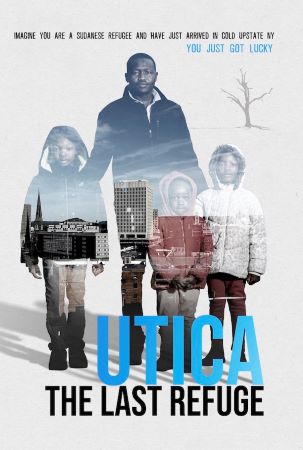
Utica: The Last Refuge 2022
Distributed by The Video Project, 145 - 9th St., Suite 230, San Francisco, CA 94103; 800-475-2638
Produced by Adam Bedient, Tom E. Brown, David Chanatry, Loch Phillipps, and Eric Saks
Directed by Loch Phillipps
Streaming, 120 mins
High School - General Adult
Human Rights; Immigration; Politics
Date Entered: 09/01/2023
Reviewed by Rachael Dreyer, Head of Research Services for Special Collections, Pennsylvania State UniversityA city with a prosperous past as a transportation and manufacturing hub, Utica experienced a gradual decline over the past 50 years, with factories, plants, and corporations relocating and shuttering facilities. However, immigration over the past 25 years has brought the city new vitality and introduced a thriving multicultural environment. With recent vitriolic, anti-immigration politicking, Utica: The Last Refuge offers a compelling counterpoint that shows all that immigration gives us as a society: it enriches--it doesn’t devalue our communities. After the executive order issued by former President Trump, “Enhancing Public Safety in the Interior of the United States,” in January 2017, the documentary humanizes and personalizes the ways in which this created new obstacles and uncertainties for refugees and refugee resettlement programs. Utica: The Last Refuge shows the real and significant impact of political and legal decisions on individual lives. The film implicitly poses the question of what happens to the people fleeing political or religious persecution, gender-based violence, genocide, famine, war, and poverty if there are no host cities to welcome them? It also asks what these supportive communities could do if they were adequately resourced to meet the needs of all new arrivals - with shoestring budgets, many organizations currently achieve so much.
For example, the Mohawk Valley Resource Center for Refugees in Utica, is an essential stop for new refugees as soon as they arrive. A central subject of the film, Mohawk Valley Resource Center for Refugees uses a unique operational model, in that the Center hires individuals who are themselves refugees providing services for new arrivals. Acting as caseworkers, they are the first point of contact for refugees arriving in Utica. These caseworkers shepherd refugees through their first days and weeks, obtaining resources, services, assisting with paperwork and documentation. These individual stories illustrate how critical resettlement programs are to provide stable communities that can support refugees fleeing international conflicts.
The filmmakers also focus on the ways in which immigrants contribute to economic redevelopment efforts in their new communities, citing key statistics about rehabilitation of blighted homes. “Like me, a lot of our people bought the old, old building and then they reconstruct.” This comment, shared by a refugee from Myanmar draws heavily on the symbolism of immigrants re-establishing themselves within new communities, starting over and rebuilding from the trauma of flight, of loss, of grief, while also rebuilding the cities in which they now reside.
One of the refugees featured in the documentary, from Sierra Leone, speaks to some Americans’ fear that other cultures will overtake whatever it is that qualifies as “American” society--as well as the integration of a true multicultural society: “A lot of people think once we came here we might keep our cultures. You take some, but you do those American things. If you want to be successful and happy you’re here, you can’t keep your old thinking.” This holds true for citizens born in the U.S., too; this film is a persuasive argument for embracing new ways (and neighbors).
Awards:Palm Springs International Film Festival, Official Selection
Published and licensed under the Creative Commons Attribution 4.0 license. Anyone can use these reviews, so long as they comply with the terms of the license.